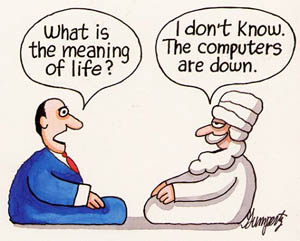I’ve been considering the implications of a new scientific law, the law of increasing functional information, in terms of how it can be applied to our thinking about various ideas. At first glance, the law says little new about the physical world. We already know about much of the various levels of the functions that are described in the paper, from star formation up through the evolution of human behavior. But there may be another way of thinking about it. A quote from Margaret Bowdon on Searle’s famous Chinese Room Argument shows how it might help:
The inherent procedural consequences of any computer program give it a toehold in semantics, where the semantics in question is not denotational, but causal.
So here we have an attack on the underlying assumption that what human understanding amounts to involves semantics and meaning that a robot or computational procedure can never have. If we expand Bowdon’s claim about how meaning comes about to include some of Searle’s other quotes like the room can never know what a hamburger is in Chinese just by processing the relevant symbols, we can enlarge that toehold by including all the functional engagements that are part of the experience of coexisting with and consuming hamburgers in a Chinese-language environment.
Semantics and intentionality and meaning—all these folk concepts we use to express how we are aware and conscious—collapse into function with the impetus driven by this new law. Meaning is an inherent feature of function, we just mystify it a great deal. In fact, a part of the semantics associated with the Chinese Room is embedded in the transfer rules that are used for translation. Whoever developed those rules understood Chinese well-enough to code them up accurately and that represents functional information increase.… Read the rest



 The impossibility of the Chinese Room has implications across the board for understanding what meaning means. Mark Walker’s paper “
The impossibility of the Chinese Room has implications across the board for understanding what meaning means. Mark Walker’s paper “